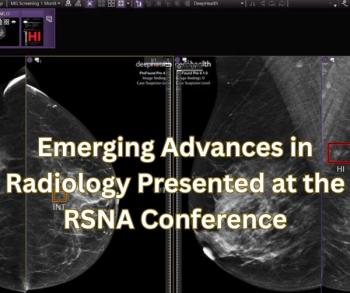
IHE enters show-and-tell phase
The Integrating the Healthcare Enterprise (IHE) initiative spent most of the first three years of its existence proving and promoting the concept of integration. This year's exhibit demonstrates its growing acceptance in medical informatics circles,
The Integrating the Healthcare Enterprise (IHE) initiative spent most of the first three years of its existence proving and promoting the concept of integration. This year's exhibit demonstrates its growing acceptance in medical informatics circles, presenting success stories from more than a dozen IHE users.
IHE is an industry-wide collaborative effort by informatics vendors to implement standards for clinical care by optimizing workflow through the improvement of information system connectivity.
RSNA meeting attendees have an opportunity to learn how some healthcare enterprises are improving patient care through systems integration. The success stories illustrate how IHE has allowed these hospitals to streamline the way information is acquired, tracked, managed, and stored through the implementation of a set of standard transactions specified in the IHE framework.
The VA Health Care System in Seattle, for example, became the first VA system to complete a full DICOM PACS integration of a Siemens Elegra ultrasound system with the VA-developed VistA Imaging PACS.
Patients there can register for an exam at any hospital computer. The data are sent to the DICOM text gateway where HL7 DICOM translation occurs, creating a DICOM work list. The imaging modality queries the work list server where a DICOM study is selected and retrieved. Once the ultrasound procedure is performed, images are sent to the imaging storage server and archived. Images are immediately available to clinical staff at any PC in the facility.
The IHE Theater, located on the exhibit floor in Hall A, Booth 1309, offers information and tools necessary for acquiring and implementing integrated systems, including a multimedia presentation. Enterprises offering success stories this week include the Cleveland Clinic, University of Wisconsin, and Detroit Medical Center.
In October, the 35 vendors participating in IHE Year 4 brought their systems to RSNA headquarters in Deerfield, IL, for the annual connectathon, to complete an exercise in cable pulling and integration testing. IHE success is not confined to U.S. healthcare. Last April, 33 vendors based in 10 countries representing over 60 systems participated in the first European connectathon.
Newsletter
Stay at the forefront of radiology with the Diagnostic Imaging newsletter, delivering the latest news, clinical insights, and imaging advancements for today’s radiologists.




























